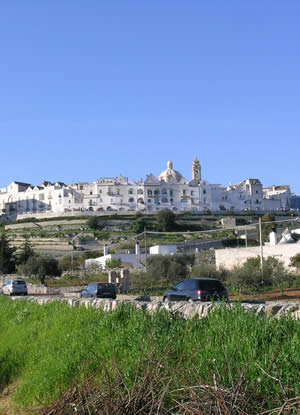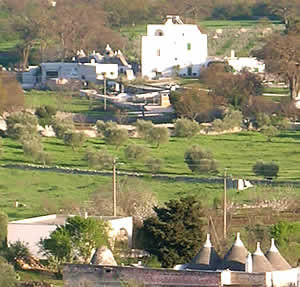
THE TERRITORY
Itria Valley, the heart of Puglia region, lies between the hills, from which you can enjoy a vibrant and colorful landscape, which, however, reveals three colors: green as the lush nature, oak, olive groves, vineyards, white such as milk of lime, layer over layer of whitening trulli, farms and ancient villages with saving the minutiae sculptures and red as the color of the bolus, the characteristic ground that, because of its properties, while covering the soil with a thin layer, allows luxuriant nature.
The trulli are ancient dry-stone architecture in Puglia, ubiquitous in Valle d' Itria. Built as a temporary shelter for shepherds and farming equipment, processed by farmers into permanent residences, elected by students in the architectural symbols of the "peasant", the trulli are now mostly holiday homes and tourist reception, able to guarantee the silence and the peace of the countryside not far, however, from typical old villages inspired by cultural events. In addition to the town of Alberobello and the whole territory of the Valle d'Itria, interesting are the types of Trulli also visited in the farms and in Contrade.
The many MASSERIE arise in the countryside of Itria Valley and, as custodians, oversee centuries with their high, white walls, forests, arable and "Iazzi". Architectures from the simple to the elegant palaces as urban, sometimes fortified by walls and walls with watch towers, almost always softened with sculptural friezes. Surrounded by extensive forests of oak and scrub, the farms are real nature reserves and of peace, where art and nature coexist in harmony.
These goals can, in fact, also moments of spirituality that if the Catholic nature, finds fulfillment in the lovely church of the same farms, with walls painted with images of saints, which testify to the liveliness of a devotion to the faith shared by local bourgeoisie and the people .

